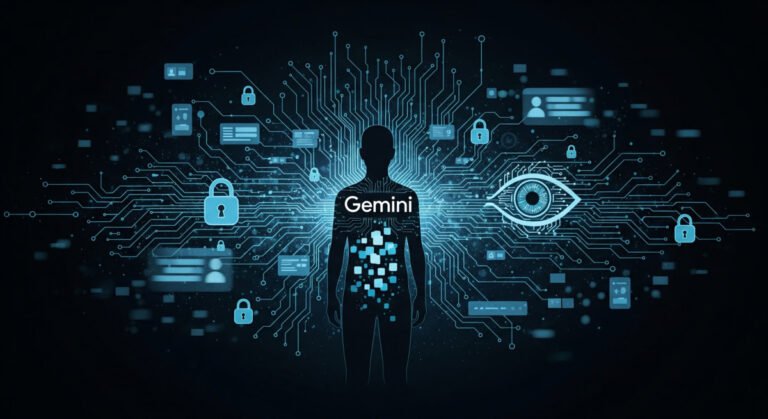

You feel that familiar scratch at the back of your throat. You take a sip of water. It hurts. You try to clear it. Still there. So, like millions of others, you pull out your phone and start Googling symptoms.
What starts as a simple search for “sore throat” quickly spirals. Now you’re reading about cancer, immune disorders, and rare infections. Panic sets in. Sound familiar?
That’s where AI could help. Tools like ChatGPT can give thoughtful, fast answers, and, for the most part, it’s free. In fact, a recent Oxford study found that large language models correctly diagnosed medical cases 94.9% of the time. That’s higher than many doctors.
However, when people used those same tools on the same cases, their accuracy dropped to just 34.5%. As it turns out, AI isn’t the limiting factor here regarding performance; it is we, humans, who might actually be holding AI back from its full potential.
The Study
The Oxford study, led by Dr. Adam Mahdi, brought in nearly 1,300 participants and gave them a simple task: act like patients. Each person received a detailed case scenario, complete with symptoms, medical history, and personal context. These included things like having just finished exams or experiencing pain when looking down. The idea was to see how well everyday people could use AI to figure out what was wrong and decide what kind of care to seek.
They were told to treat the AI like a real doctor. Ask questions, describe symptoms, and get help. Each participant had to interact with the model at least once, but they were free to ask follow-up questions or try again if they needed more information. The researchers used three different LLMs for the experiment: ChatGPT-4o, Llama 3, and Command R+.
Meanwhile, a panel of physicians agreed on the correct diagnosis for each case along with the appropriate level of care. The researchers already knew whether the right move was staying home or calling an ambulance. The test was whether humans and AI could get there together.
Smart AI, Bad Results: Human Error?
Think of AI as the perfect employee. It can process huge amounts of data, follow instructions precisely, and deliver answers in seconds. But pair it with a bad manager, and everything falls apart. Vague instructions, unclear goals, and underused capabilities can lead to disappointing results. That’s exactly what happens when many people try to use AI.
Imagine your boss asking you to grab them a coffee, but not saying what kind. You come back with a hot black coffee, only for them to complain that they wanted an iced oat milk latte with two pumps of vanilla. Technically, you did the job. But without the proper instructions, you couldn’t possibly deliver what they really wanted.
There’s a common assumption that these tools just “get it,” like a friend who knows you so well they can finish your sentences. But AI isn’t your best friend. It can’t read your tone or guess what you meant. If you don’t give it exactly what it needs, you won’t get the right output.
This disconnect showed up clearly in the Oxford study. Researchers found that participants using LLMs identified at least one relevant condition in just 34.5 percent of cases. The control group, which didn’t use AI at all, did better at 47 percent. And when it came to choosing the correct course of action, LLM users got it right only 44.2 percent of the time. The AI models, when left to decide on their own, got it right 56.3 percent of the time.
So what went wrong? Participants gave incomplete or unclear prompts. Some forgot to mention key symptoms. Others left out severity or timing. As a result, the models misinterpreted the input or missed important clues. And even when the AI gave the right diagnosis, users didn’t always follow through. That part isn’t unique to machines. People ignore doctors, too. Symptoms ease, antibiotics go unfinished, and instructions get skipped.
Interestingly, some AI tools are already gaining traction in actual medical workflows. OpenEvidence, for example, is being used by physicians to search and validate clinical literature. It’s not trying to replace the doctor, it’s augmenting them. The difference lies in design: tools like these support professionals who already know how to filter, interpret, and act on the results. That’s very different from handing the same system to an untrained patient and expecting the same outcome.
The Human-AI Diagnosis Bottleneck
According to Nathalie Volkheimer, a user experience specialist at the Renaissance Computing Institute, one problem with patients interacting with doctors is that some conditions or the events leading up to them can be embarrassing. That’s why people sometimes leave out important details.
But when the other party is a machine without judgment or emotion, you’d think people would feel more comfortable sharing everything. That wasn’t the case.
This highlights a crucial flaw that the study exposed. The problem isn’t that AI models aren’t smart enough. It’s that humans are still learning how to communicate with them. As Volkheimer puts it, the issue isn’t the machinery itself. It’s the interaction between humans and technology.
It also exposes a deeper flaw in how we evaluate AI. LLMs can pass medical exams or legal tests with ease. That’s not surprising. They’re trained on vast datasets and have access to the correct information. But those tests don’t reflect how real people talk, think, or ask questions.
Even the training data has its limits. As one medical review points out, many models are trained on datasets that don’t reflect real-world diversity or rare edge cases. In medicine, missing those outliers can mean missing a life-threatening condition. That’s why performance on a textbook exam doesn’t always translate to success in messy clinical environments.
If a company wants to build an AI chatbot to replace a customer service rep, it can’t just test whether the bot knows the right answers. It needs training on the messy, inconsistent ways people actually speak. People can phrase something as simple as asking for a product price in a dozen different ways. If the model doesn’t recognize all of them, it won’t deliver the answer the customer needs.
Smarter AI Needs Smarter Humans
If there’s one thing this study makes clear, it’s that raw intelligence isn’t the problem. The AI can get the right answer. It often does. The breakdown happens when we step in and when we give bad prompts, leave out key details, or ignore the answers we don’t want to hear.
This isn’t unique to healthcare. Whether it’s a customer service chatbot, a legal assistant, or an AI-powered tutor, the same pattern applies. The model isn’t failing the task. We’re failing the interface.
It’s easy to get swept up by impressive benchmark scores and high degrees of accuracy. But an AI that aces an exam doesn’t automatically know how to help a confused, overwhelmed, or vague human. And until we start designing and testing these systems with messy human behavior in mind, we’ll keep overestimating their real-world usefulness.
This contrast becomes even clearer when looking at AI systems that do succeed. At Johns Hopkins, researchers deployed an AI tool that detected sepsis nearly six hours earlier than traditional methods and reduced patient deaths by 20 percent. The difference? That system was embedded directly into hospital workflows and relied on real-time clinical data, not just patient prompts. It shows that with the right design and context, AI can work, but only when it accounts for the humans using it.
So the next time your throat hurts and you’re tempted to ask a chatbot what it means, remember that getting a good answer depends on asking a good question. The models aren’t the bottleneck. We are. And that’s the part we need to fix.
The post Why AI diagnosis fails: The human error behind broken results appeared first on Android Headlines.


